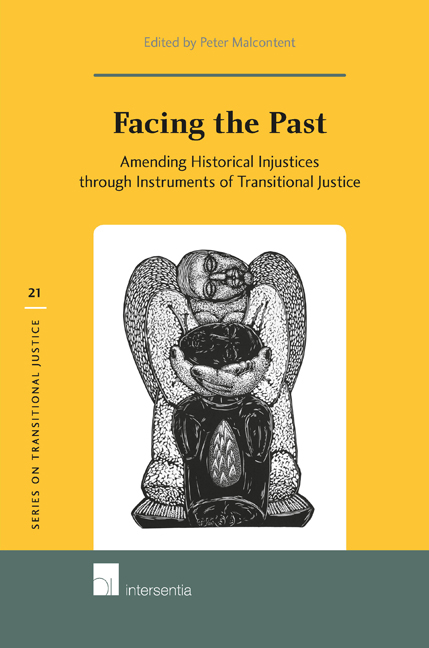Book contents
- Frontmatter
- Acknowledgements
- Contents
- PART I TRANSITIONAL JUSTICE. WHAT'S IN THE NAME?
- PART II RETRIBUTIVE JUSTICE
- PART III RESTORATIVE JUSTICE
- PART IV PENDING CASES
- The Unfulfilled Promise of Protection. The Netherlands and Srebrenica
- Facing the Armenian Genocide. A History of Denial and Politics
- The United States and Torture. The Politics of Transitional Ju
- Author Information
Facing the Armenian Genocide. A History of Denial and Politics
from PART IV - PENDING CASES
Published online by Cambridge University Press: 15 December 2017
- Frontmatter
- Acknowledgements
- Contents
- PART I TRANSITIONAL JUSTICE. WHAT'S IN THE NAME?
- PART II RETRIBUTIVE JUSTICE
- PART III RESTORATIVE JUSTICE
- PART IV PENDING CASES
- The Unfulfilled Promise of Protection. The Netherlands and Srebrenica
- Facing the Armenian Genocide. A History of Denial and Politics
- The United States and Torture. The Politics of Transitional Ju
- Author Information
Summary
INTRODUCTION
With respect to repairing historical injustices that occurred long ago, not only are there fewer instruments available, but there are also fewer opportunities to apply them successfully. This is because time has often allowed the injustice at stake to become infected by political fencing about related historical and political issues. This seems also to be the case with the debate about the Armenian genocide during World War I, when about one million Christian Armenians were massacred under the auspices of the authorities of the Ottoman state directed by the ruling Young Turks Committee of Union and Progress (CUP).
The CUP regime in Istanbul regarded the Armenian minority as an internal threat because of successive insurgencies by Armenian nationalists and the support for their call to autonomy by the advancing Russians from the northeast and the British and French in the west. In order to eliminate the ‘Armenian fifth column’ the CUP regime decided to deport the Armenian communities from Anatolia and Cilicia to stipulated desert destinations in Syria and Mesopotamia (Iraq). Especially the deportation convoys from eastern Anatolia were subject to murderous attacks by Ottoman irregular forces, Kurdish tribes and units of the Ottoman third army. Only twenty percent of the deportees reached their destinations, where hundreds of thousands of them perished of disease, thirst, starvation and a further round of massacres.
In 1918 the Armenians were nevertheless capable of using the vacuum left by the Russian forces on the Caucasian front to declare an independent Republic of Armenia in the southwestern portion of Transcaucasia. The peace terms of the Treaty of Sevres imposed on the Ottoman Empire by the Allied Powers after the war even provided for an enlargement of the young republic at the cost of Ottoman territories in eastern Anatolia. Although the new Ottoman government in Istanbul accepted the Treaty provisions, Mustafa Kemal's rising nationalist movement in Ankara fiercely opposed the partition of Anatolia because it would destroy the territorial integrity of the Ottoman heartlands. In September 1920 Kemal's forces ended the short-lived existence of the Armenian Republic by occupying its western territories. The eastern parts were left to the Bolsheviks and finally became a Soviet republic.
- Type
- Chapter
- Information
- Facing the PastAmending Historical Injustices Through Instruments of Transitional Justice, pp. 339 - 360Publisher: IntersentiaPrint publication year: 2016



